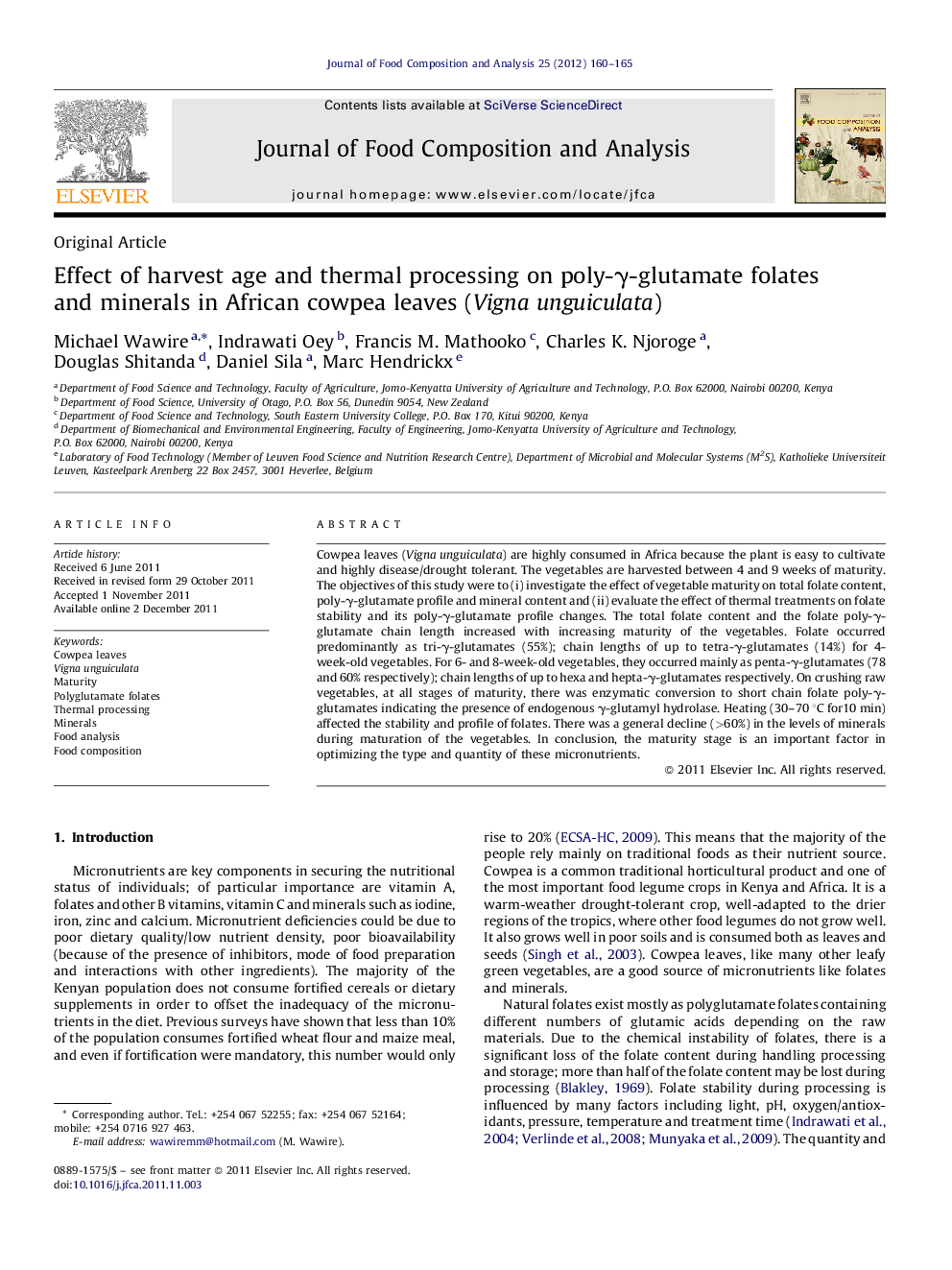| Article ID | Journal | Published Year | Pages | File Type |
|---|---|---|---|---|
| 1218581 | Journal of Food Composition and Analysis | 2012 | 6 Pages |
Cowpea leaves (Vigna unguiculata) are highly consumed in Africa because the plant is easy to cultivate and highly disease/drought tolerant. The vegetables are harvested between 4 and 9 weeks of maturity. The objectives of this study were to (i) investigate the effect of vegetable maturity on total folate content, poly-γ-glutamate profile and mineral content and (ii) evaluate the effect of thermal treatments on folate stability and its poly-γ-glutamate profile changes. The total folate content and the folate poly-γ-glutamate chain length increased with increasing maturity of the vegetables. Folate occurred predominantly as tri-γ-glutamates (55%); chain lengths of up to tetra-γ-glutamates (14%) for 4-week-old vegetables. For 6- and 8-week-old vegetables, they occurred mainly as penta-γ-glutamates (78 and 60% respectively); chain lengths of up to hexa and hepta-γ-glutamates respectively. On crushing raw vegetables, at all stages of maturity, there was enzymatic conversion to short chain folate poly-γ-glutamates indicating the presence of endogenous γ-glutamyl hydrolase. Heating (30–70 °C for10 min) affected the stability and profile of folates. There was a general decline (>60%) in the levels of minerals during maturation of the vegetables. In conclusion, the maturity stage is an important factor in optimizing the type and quantity of these micronutrients.
► Cowpea leaves have high total folate content. ► The folate chain length increases with increasing vegetable maturity. ► Endogenous GGH was responsible for the enzymatic conversion to short chain folates. ► The stability and profile of folates is affected by thermal processing. ► Increasing vegetable maturity is accompanied by a general decline in mineral content.
